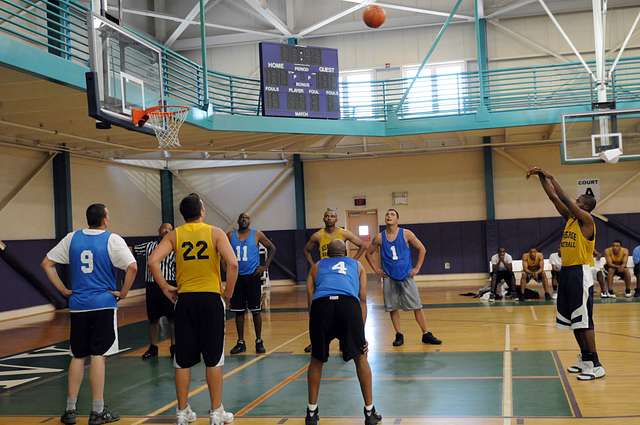If you’re new to basketball, you may have heard the term “bonus” thrown around during a game. But what does it actually mean? In basketball, the bonus is a term used to describe a situation where one team has accumulated a certain number of fouls, which then results in the opposing team earning extra free throws every time they are fouled. This can be a crucial advantage for the team in the bonus, especially in a close game.
The rules for the bonus can vary depending on the level of play, from high school to college to professional leagues like the NBA. It’s important to understand the specific rules for the league you’re playing in or watching, as they can affect gameplay and strategy.
In general, though, the bonus is an important concept to understand in basketball, as it can have a significant impact on the outcome of a game.
Understanding the Concept of Bonus in Basketball
In basketball, the bonus is a rule that comes into play when a team commits a certain number of fouls. When this threshold is reached, the opposing team is awarded free throws. The bonus rule serves as a penalty for teams that foul excessively and encourages fair play.
The number of fouls required to trigger the bonus varies depending on the level of play. In the NBA, the bonus is triggered when the opposing team commits its fifth team foul in a quarter.
In NCAA men’s basketball, the bonus is triggered when the opposing team commits seven fouls in a half. For NCAA women’s basketball and high school games, the threshold is five fouls in a quarter.
It is important to note that the bonus applies to common team fouls, which are non-shooting fouls. These fouls typically result in a change of possession or the team inbounding the ball. Shooting fouls, on the other hand, result in free throws regardless of whether the team is in the bonus or not.
Teams must be disciplined on the court to avoid triggering the bonus. Once the bonus is in effect, it can be challenging to defend without fouling and giving the opposing team more free throws. As a result, teams often adjust their defensive strategies to avoid committing fouls.
In summary, the bonus is a crucial component of basketball that penalizes teams for excessive fouling and encourages fair play. It is triggered when a team commits a certain number of common team fouls, and the opposing team is awarded free throws. Understanding the bonus rule is essential for players, coaches, and fans alike.
Rules Governing Bonus in Basketball
When playing basketball, it is essential to understand the rules governing the bonus situation. This situation occurs when a team accumulates a requisite number of fouls, and the opposing team is awarded free throws.
In this section, we will discuss the two sub-sections of the bonus situation: Team Foul Limit and Free Throw Opportunities.
Team Foul Limit
The number of fouls a team can commit before the opposing team enters the bonus situation varies depending on the level of play. In the NBA, a team enters the bonus situation when they commit their fifth team foul in a quarter.
In NCAA men’s basketball, the bonus is triggered when the opposing team reaches seven fouls in a half, while in NCAA women’s basketball and high school games, the limit is set at five fouls per half.
Free Throw Opportunities
Once a team enters the bonus situation, the opposing team is awarded free throw opportunities. In the NBA, the team is awarded two free throws each time they are fouled.
In high school and NCAA women’s basketball, the team is awarded one free throw for a non-shooting foul and two free throws for a shooting foul. In NCAA men’s basketball, the team is awarded one-and-one free throw opportunities for the first seven fouls, and two free throws for the eighth and subsequent fouls.
It is worth noting that the bonus situation resets at the start of each quarter or half, depending on the level of play. Therefore, a team must accumulate the requisite number of fouls again to enter the bonus situation.
Understanding the rules governing the bonus situation is crucial in basketball. It can affect the outcome of the game and the strategy employed by each team.
Impact of Bonus on Game Strategy
The bonus rule in basketball has a significant impact on both offensive and defensive strategies. Understanding this rule can help you make better decisions during the game.
Offensive Strategy
When your team is in the bonus, every foul committed by the opposing team results in free throws for your team. This means you have an opportunity to score points without having to make a field goal. As a result, offensive players may try to draw fouls intentionally to get to the free-throw line.
However, it’s important to note that free throws are not guaranteed points. If you miss the free throws, your team will not score any points. Additionally, if you rely too heavily on drawing fouls, you may become predictable and easier to defend against.
Defensive Strategy
When your team is in the bonus, every foul committed by your team results in free throws for the opposing team. This means you need to be more careful with your defensive plays to avoid giving away free points.
Defensive players may try to play more aggressively to force turnovers or stop the opposing team from scoring. However, this can also lead to more fouls and put your team in an even worse position.
It’s important to balance your defensive strategy with the risk of giving away free throws. You may need to adjust your defensive approach depending on the situation, such as if your team is already ahead or behind in the game.
Overall, the bonus rule in basketball can have a significant impact on the game strategy for both offensive and defensive players. By understanding this rule and adjusting your approach accordingly, you can increase your chances of success on the court.
Historical Evolution of Bonus Rules
Over the years, the bonus rule has undergone several changes in basketball. Here’s a brief look at how the bonus rule has evolved over time:
- 1930s-1950s: During this period, there was no bonus rule in basketball. Teams could foul as much as they wanted without any consequences.
- 1960s-1970s: In the 1960s, the bonus rule was introduced in college basketball. If a team committed more than six fouls in a half, the opposing team would be awarded one free throw for each subsequent foul. In the 1970s, this rule was extended to high school basketball as well.
- 1980s-1990s: In the 1980s, the bonus rule was changed to allow for two free throws for each subsequent foul after the seventh foul in a half. This rule was also extended to the NBA in the 1990s.
- 2000s-Present: In the present day, the bonus rule remains the same in college and high school basketball, but the NBA has made a few changes. There is no one-and-one rule in the NBA, which means that once a team reaches the bonus, they are awarded two free throws each time. Each team has four fouls to give per quarter.
In summary, the bonus rule has come a long way since its inception. Today, it is an essential component of professional basketball games and encourages fair play while penalizing teams that foul too much.
Comparative Analysis: Bonus Rules in Different Leagues
When it comes to bonus rules in basketball, different leagues have their own criteria. Understanding the differences between these rules can help you better appreciate the game and follow it more closely. Here is a comparative analysis of bonus rules in different leagues.
National Basketball Association
In the NBA, teams enter the bonus on the fourth team foul in each quarter. After that, the fouled team gets two free throws for every foul committed by the opposing team.
There is no one-and-one rule in the NBA, which means that teams get two free throws each time they are fouled. Each team has four fouls to give per quarter.
International Basketball Federation
The International Basketball Federation (FIBA) has a slightly different rule. In FIBA games, teams enter the bonus on the fifth team foul in each quarter.
After that, the fouled team gets two free throws for every foul committed by the opposing team. However, if a player is fouled while shooting a three-pointer, they get three free throws instead of two.
National Collegiate Athletic Association
The National Collegiate Athletic Association (NCAA) has a different set of rules for bonus situations. In NCAA games, teams enter the bonus on the seventh team foul in each half. After that, the fouled team gets one-and-one free throws for every foul committed by the opposing team.
If the first free throw is made, the shooter gets to take another free throw. If the first free throw is missed, the ball is in play and the fouled team can try to get the rebound.
In summary, different basketball leagues have their own unique bonus rules. In the NBA, teams enter the bonus on the fourth team foul in each quarter and get two free throws each time they are fouled.
In FIBA games, teams enter the bonus on the fifth team foul in each quarter and get two free throws for every foul committed by the opposing team. In NCAA games, teams enter the bonus on the seventh team foul in each half and get one-and-one free throws for every foul committed by the opposing team.







